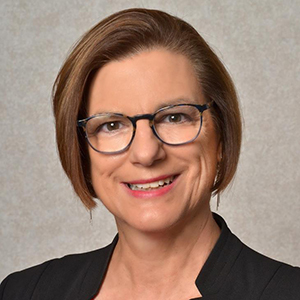Related Nursing Articles
Adult Nurse Practitioner: What You’ll Do and How to Become One
Learn what an adult nurse practitioner is and does in their care of adult patients.
All nurse practitioners have a specialty. One popular choice is caring for adults, a broad specialty that allows nurse practitioners to see patients across decades of their life. Often, adult nurse practitioners act as primary care providers. They’re able to see patients and assess, diagnose, and treat both illness and injury. Some adult nurse practitioners see patients in their own offices or clinics, while others work in physicians’ offices or hospitals.
In This Article
Education Requirements | Job Description | Salary | Outlook | Professional Resources
“Adult nurse practitioners can see anyone but infants and children,” says Joyce Karl, DNP, RN, APRN-CNP, director of the Adult-Gerontology Primary Care Nurse Practitioner specialty program at Ohio State University. They can see patients for overall wellness, as well as conditions such as cancer, heart disease, diabetes, arthritis, sports injuries, and other ailments. “Their practice may also focus on certain age groups such as just college students or just older adults.”
Adult nurse practitioners can see anyone but infants and children.
No matter where they find work, demand is high. The U.S. Bureau of Labor Statistics (BLS) says roles for nurse practitioners are expected to grow by 44.5% through 2032. You’ll need an advanced degree to take on this high-level and demanding role. Adult nurse practitioners are required to have at least a master’s degree, and doctoral degrees aren’t uncommon.
Adult Nurse Practitioner Education Requirements
Adult nurse practitioners are a type of advanced practice registered nurse (APRN). That means the first step on your education journey will be earning your license as a registered nurse (RN). You can become an RN with either an Associate Degree in Nursing (ADN) or a Bachelor of Science in Nursing (BSN) degree.
Once you’re a licensed RN, you can pursue your graduate nursing degree.
You’ll need at least a Master of Science in Nursing (MSN) degree if you want to be an adult nurse practitioner, although earning a Doctor of Nursing Practice (DNP) degree is a good option to consider.
Currently, an MSN is the minimum degree needed for any nurse practitioner role. This is likely to change in the very near future, however. There is a strong shift in the industry toward DNPs becoming the standard entry-level degree for nurse practitioners by 2025.
Currently a Master of Science in Nursing (MSN) is the minimum degree required to work as an adult nurse practitioner.
Licenses and Certifications
You’ll need to follow the specific APRN licensure rules in your state once you complete your education. Generally, this includes paying a fee, submitting proof of your education, and passing a national certification exam in your area of specialty. Adult nurse practitioners need to earn the Adult-Gerontology Primary Care Nurse Practitioner (A-GNP) certification from the American Association of Nurse Practitioners Certification Board (AANPCB). You’ll need to have already earned an MSN or DNP or be within six months of graduation from either program.
Other requirements include:
- An RN license in good standing
- A transcript with proof of your education
- 500 supervised clinical practice hours
- Graduate or higher-level courses in advanced physical assessment, advanced pharmacology, and advanced pathophysiology
In some states, you’ll need to apply separately for a license called a prescriptive authority that allows you to prescribe medication.
What Do Adult Nurse Practitioners Do?
Adult NPs generally act as primary care providers qualified to provide a level of care similar to that of physicians.
“Adult nurse practitioners provide integrated, accessible care services to people from diverse cultural, social, and economic backgrounds,” says Karl. “They see patients and promote healthy living and wellness. They perform physical examinations, order and interpret tests, prescribe medications and treatments, and also provide education and counseling.”
Where You’ll Work
Adult NPs can work in a wide range of locations beyond a physician’s office.
Common workplaces include:
Hospitals
Physicians’ offices
Private offices
Health practices
Community health clinics
“You can find jobs in various businesses, in prisons or universities, or for health plans,” says Karl. “You can also provide telehealth, work in nurse-run clinics, or even your own independent clinics.”
Salary
The BLS doesn’t track data for adult nurse practitioners specifically. However, it does report a median salary of $126,260 for nurse practitioners. Adult NPs’ salaries can vary based on where they work, their years of experience, and their location. Because primary care providers can work independently in some states, adult NPs often open their own clinics. This could put you in control of your schedule, earnings, and career growth. Take a look at NP salaries by state:
Job Outlook
Much of the dramatic growth in this career is driven by the demand for nurse practitioners who can serve in primary care roles amid an ongoing nursing shortage. The demand for nurses is expected to continue until at least 2031 as nurses retire and the baby boomer generation ages, triggering increased demand for healthcare.
However, retirement won’t leave just nursing roles open. Physicians are also expected to retire in large numbers over the next decade. Adult NPs are in high demand because they’re able to take on both nursing leadership roles and the primary care provider roles of retiring physicians.
Professional Resources
As an adult NP, it’s important to stay current and informed in the healthcare field. There are several resources you can check out to keep you connected and up to date:
American Association of Nurse Practitioners offers continuing education, professional resources, career opportunities, and more.
The Journal for Nurse Practitioners publishes the latest academic articles and research in the field.
Facebook’s Nurse Practitioner Group includes adult NPs as members who share insights, tips, and stories.


With professional insight from:
Adult Nurse Practitioner
Director, Adult-Gerontology Primary Care Nurse Practitioner specialty program, Ohio State University


